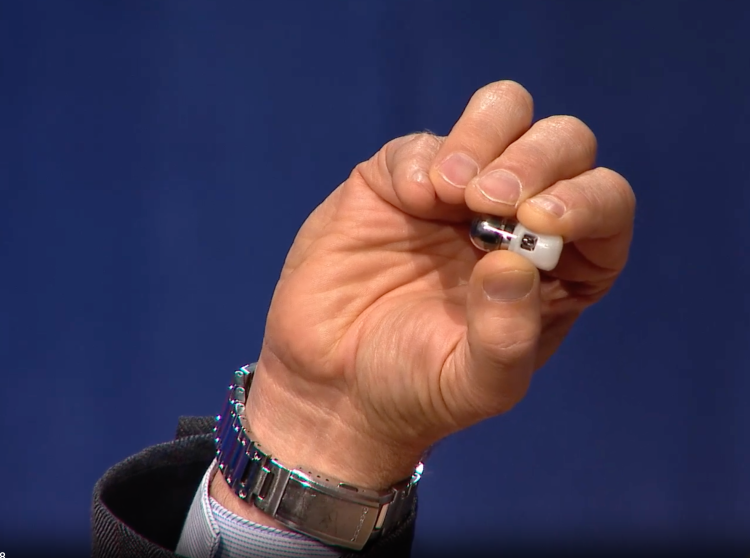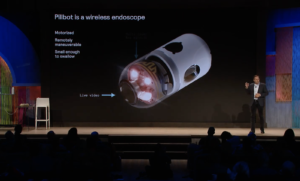
Revolutionizing Healthcare: Endiatx’s Robotic Pill Sets New Standards
In a remarkable leap forward for medical technology, Endiatx is advancing its groundbreaking PillBot into clinical trials, paving the way for FDA approval and a transformative shift in healthcare diagnostics. The PillBot, a swallowable robotic capsule equipped with state-of-the-art cameras, sensors, and autonomous capabilities, promises to revolutionize how doctors examine the gastrointestinal tract.
Founded in 2019, Endiatx has garnered significant attention and funding, including a substantial investment from the Singapore-based Verge Health Tech Fund. This financial backing has fueled their progress, allowing them to refine their technology and embark on pivotal clinical trials set to commence later this year at a leading U.S. medical institution specializing in gastroenterology.

Torrey Smith, CEO of Endiatx, shared in an interview with VentureBeat that their current prototype, measuring a mere 13mm by 30mm, is equipped to transmit high-resolution video at impressive speeds. Smith, who has personally tested the PillBot by swallowing it on stage, envisions a future where this technology becomes a household diagnostic tool, potentially available over-the-counter for as little as $50.
Central to Endiatx’s strategy is integrating artificial intelligence (AI) into the PillBot, aiming to automate and democratize access to advanced medical diagnostics. By harnessing AI to analyze data collected by the PillBot, Endiatx seeks to expand its utility beyond specialized medical facilities, enabling routine and proactive health monitoring.
The PillBot’s journey from concept to clinical reality has not been without challenges. Endiatx’s engineering team has overcome numerous obstacles, from miniaturizing components to developing a reliable propulsion system capable of navigating the intricate pathways of the human digestive system. Their commitment to vertical integration – designing, testing, and manufacturing in-house – has been crucial in maintaining rigorous standards and accelerating development.
However, Endiatx’s path forward has been shaped by more than technical innovation. The company has confronted skepticism rooted in high-profile failures within the medical technology sector, such as the notorious Theranos scandal. Despite these challenges, Endiatx has prioritized transparency and tangible demonstrations of their technology’s capabilities, including live demonstrations of the PillBot’s operation.
Looking ahead, Endiatx aims not only to secure FDA approval and commercial launch by early 2026 but also to expand the PillBot’s capabilities beyond diagnostics. Smith envisions future iterations capable of performing targeted therapeutic procedures, ushering in a new era of minimally invasive treatments facilitated by robotic precision.
As Endiatx continues to redefine the boundaries of medical robotics, their journey serves as a beacon of deep tech innovation, reminding us of the transformative potential when ambitious vision meets meticulous execution. The PillBot isn’t just a medical device; it’s a testament to the enduring spirit of Silicon Valley’s pioneering ethos, reborn in the pursuit of groundbreaking solutions to humanity’s most pressing challenges.
In conclusion, Endiatx’s PillBot represents more than a technological marvel; it embodies a new wave of healthcare innovation that promises to make advanced diagnostics more accessible and effective worldwide. As we witness the PillBot’s evolution from laboratory prototype to clinical reality, one thing is certain: Endiatx is paving the way for a future where medical care is not only proactive but profoundly personalized.
You may also like
Archives
Calendar
| M | T | W | T | F | S | S |
|---|---|---|---|---|---|---|
| 1 | 2 | 3 | 4 | 5 | 6 | 7 |
| 8 | 9 | 10 | 11 | 12 | 13 | 14 |
| 15 | 16 | 17 | 18 | 19 | 20 | 21 |
| 22 | 23 | 24 | 25 | 26 | 27 | 28 |
| 29 | 30 | 31 | ||||
Leave a Reply